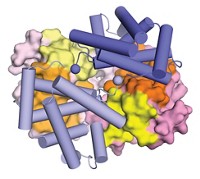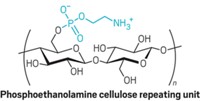Advertisement
Grab your lab coat. Let's get started
Welcome!
Welcome!
Create an account below to get 6 C&EN articles per month, receive newsletters and more - all free.
It seems this is your first time logging in online. Please enter the following information to continue.
As an ACS member you automatically get access to this site. All we need is few more details to create your reading experience.
Not you? Sign in with a different account.
Not you? Sign in with a different account.
ERROR 1
ERROR 1
ERROR 2
ERROR 2
ERROR 2
ERROR 2
ERROR 2
Password and Confirm password must match.
If you have an ACS member number, please enter it here so we can link this account to your membership. (optional)
ERROR 2
ACS values your privacy. By submitting your information, you are gaining access to C&EN and subscribing to our weekly newsletter. We use the information you provide to make your reading experience better, and we will never sell your data to third party members.
Biological Chemistry
Synthetic Anchored Prion Protein Created
by Stuart A. Borman
October 27, 2008
| A version of this story appeared in
Volume 86, Issue 43
Researchers have synthesized prion proteins linked to glycosylphosphatidylinositol (GPI), a sugar-lipid that attaches proteins to cell membranes. The construct is the first fully synthetic GPI-anchored protein ever made. The work should ease the synthesis of other anchored proteins and aid mechanistic studies of prion disease. Prion protein can become infectious and cause mad cow disease in cattle and Creutzfeldt-Jakob disease in people, but the disease mechanism is unknown. GPI anchoring to cell membranes plays a crucial role in the structural change by which prion protein converts to an infectious form, but scientists have not been able to prepare sufficient amounts of homogeneous anchored prion protein from natural sources to study the process. Christian F. W. Becker of the Technical University of Munich; Peter H. Seeberger of the Swiss Federal Institute of Technology, in Zurich; and coworkers produced prion protein in bacteria and used native chemical ligation to link it to a GPI anchor they synthesized separately (Angew. Chem. Int. Ed. 2008, 47, 8215). The protein-anchor complex isn't a fully faithful replica of its natural counterpart because cysteine-thioester chemistry is needed to combine the two units, but it's close.




Join the conversation
Contact the reporter
Submit a Letter to the Editor for publication
Engage with us on Twitter